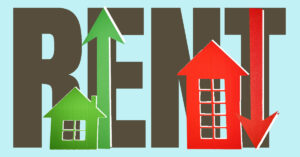Beyond interest rates and affordability, housing demand can be influenced by psychological and emotional factors. For instance, observing friends, family or peers purchase homes often plants a seed that fosters the desire for homeownership.
Witnessing others amass wealth through real estate motivates people to become homeowners and create wealth for themselves. People who watch their friends’ children playing in a quiet neighborhood with a nice backyard often desire to provide their families with the same sort of environment.
“There’s always the chance that rates drop or normalize to a more natural rate.”
Recent research further validates these beliefs. A Bankrate survey from earlier this year found that 74% of respondents view homeownership as an essential element of the American dream. This holds a greater significance than any other measure of financial stability, including a secure retirement, a thriving career or even a college degree. And a 2019 study published in the International Journal of Consumer Studies indicates that a positive relationship between homeownership and life satisfaction exists, even when respondents were concerned about affording their mortgage.
When coupled with traditional supply- and-demand drivers, psychological and emotional factors enable people to paint a mosaic of potential and probable outcomes in various economic environments. For instance, alongside pent-up demand, the rising interest rate environment has also curtailed supply, resulting in a buildup of deferred sales activity. At some level of reduced interest rates, this has the potential to unleash a torrent of housing supply.
Deferred sales
Using the U.S. Treasury yield curve, one can estimate the “natural interest rate” for the 30-year fixed mortgage. As of Dec. 8, 2023, the natural rate could be estimated to be approximately 69 basis points below the actual Freddie Mac survey rate of 7.03%.
With this information, it’s reasonable to anticipate this variance to normalize over time, with the actual rate approaching the expected natural rate. This normalization could occur through a combination of rising U.S. Treasury yields and/or declining mortgage rates, although it’s impossible to predict the timing and specific factors driving this convergence.
The outlook for mortgage interest rates holds implications for supply, demand, new construction, affordability and home values. While much of this is driven by simple mathematics, psychological and emotional factors inevitably come into play.
From late 2019 to early 2022, there were about $10.5 trillion in new mortgages originated in the U.S., with an average interest rate of about 3.5%. Americans locked in at these rates are not in a hurry to sell their homes and lose their low-rate financing.
It’s a phenomenon called the “lock-in effect,” which greatly affects the balance between the number of homes listed for sale and the number of people who want to buy them. In addition to pent-up demand that occurs when housing affordability declines, the lock-in effect produces a “deferred sales impulse” among those who want to sell but are unable or unwilling to do so in the current interest rate environment.
Case in point: The number of homes available for sale is more than 40% lower than historic averages dating back 25 years, and various indicators like vacancy rates and the time it takes for homes to sell are at or near historic lows. These metrics indicate that there is an overwhelmingly undersupplied housing market relative to today’s demand.
How might this deferred sales impulse change in the coming months? And how can lenders and the originators who work with them possibly benefit from buyers who are emotionally and financially compelled to purchase even in a high interest rate environment? It’s constructive to consider possible scenarios that could take shape in the coming months based on where rates may trend.
Dream scenario
Let’s assume that mortgage financing costs continue heading north — above 8% for the 30-year fixed mortgage. If so, fewer people will be able to afford to buy, resulting in increased rental demand. The number of properties for sale, buyers and total sales will shrink. This would further depress inventory levels and disincentivize prospective sellers. Builders would likely feel less confident too, leading to fewer homes being built.
If mortgage rates remain close to where they are currently — between 7% and 7.5% — more people will still want to purchase homes even though they cost more to finance. As a result, housing inventory will continue to fall short of demand. Builders would be cautious but hopeful. This means that more new residences could be constructed, with home prices leveling out or trending up.
On the other hand, there’s always the chance that rates drop or normalize to a more natural rate (refer back to the estimate that the 30-year fixed mortgage rate should be roughly 69 basis points below the Freddie Mac survey rate of 7.03%). In this case, home prices become more palatable, increasing buyer interest and affordability. Builder confidence would likely increase but, assuming that housing supply remained low, prices would likely rise.
The dream scenario for buyers is when mortgage rates drop below the natural rate and land below 6%. Many on-the-fence sellers would list their homes, buoyed by the prospect of more affordable financing on their next property.
Consequently, inventory levels would rise to meet demand in some markets while outpacing demand in others. Builders would be motivated to increase construction. The effect on home values would vary from market to market. In areas with fewer buyers, home prices might go down due to excess supply, while in other locations, prices might spike due to excess demand.
● ● ●
While the range of outcomes for mortgage lenders and secondary market investors is wide, today’s probability-weighted outlook is arguably more favorable than what was faced circa 2021 when rates were low, credit spreads were tight and prices were high. As residential housing inventory numbers remain low, offering short-term, high-yield construction loans (with yields exceeding 10%) to builders is one example of an appealing investment opportunity.
Investors should keep their emotions in check when committing to a money-making opportunity. But they also should consider that many potential homebuyers are driven by emotional and psychological factors, even when rates, prices and supply levels are less than desirable. ●
Author
-

Jack Macdowell is the co-founder, managing member and chief investment officer at the Palisades Group. He is responsible for leading all investment activities, including research, portfolio allocation and risk-management functions. Prior to founding Palisades, Macdowell held various leadership roles at buy-side companies focused on mortgage and securitized credit. He has sell-side experience with Credit Suisse First Boston and RBC Capital Markets.





